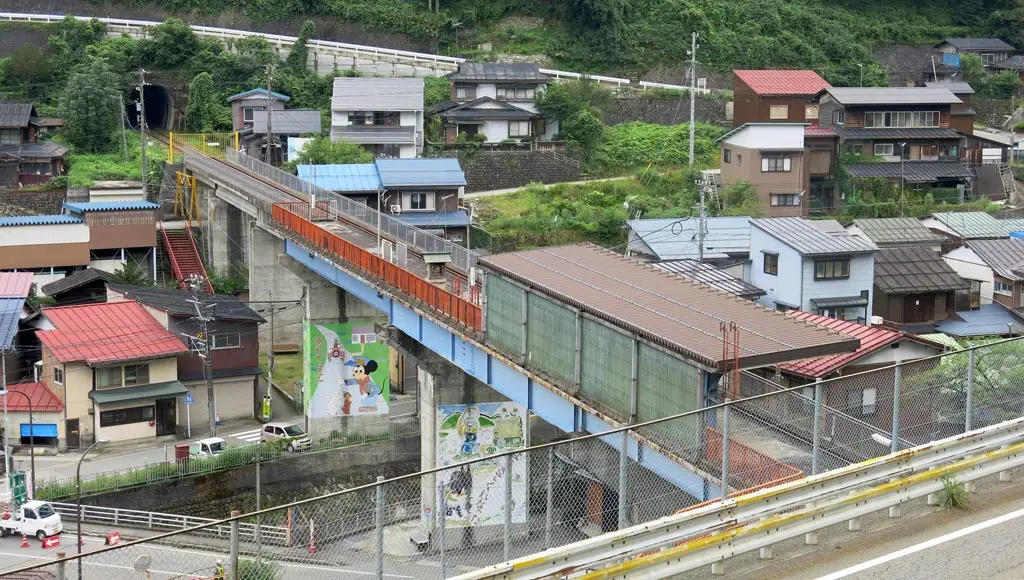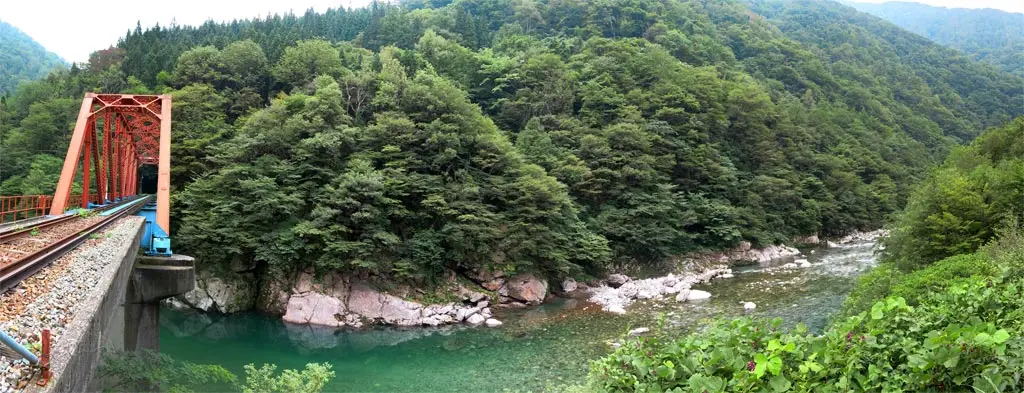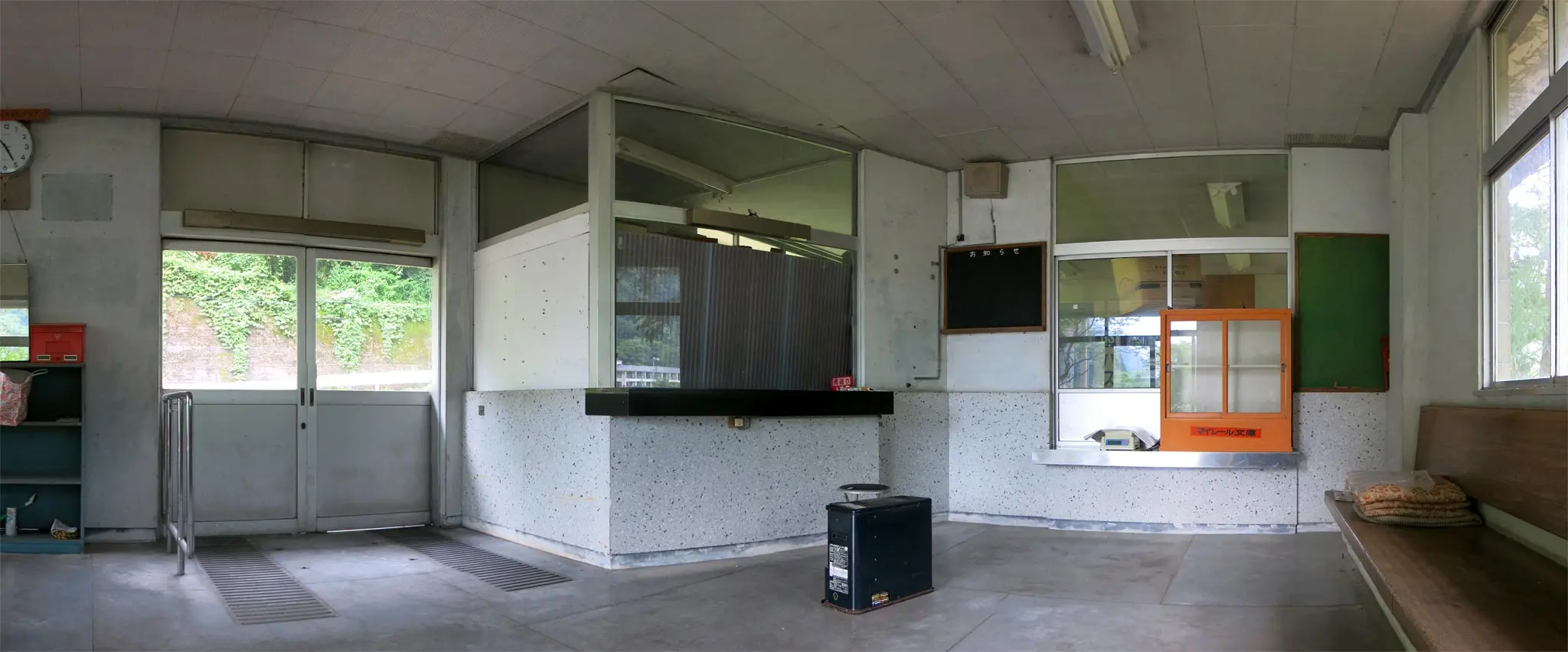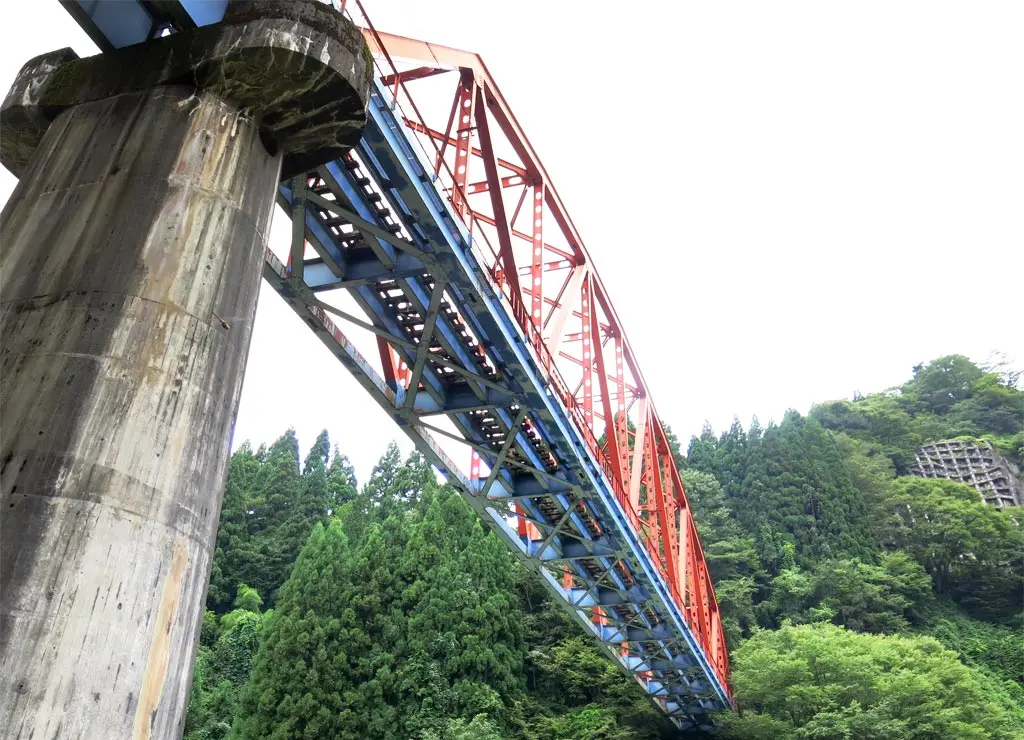In the northern-most area of Gifu prefecture, and the Hida region, lies the valley town of Kamioka 神岡. It stretches over a very wide area, but it's downtown area, is its most prominent feature.
At its height, the entire area of Kamioka housed 30,000 residents. That was a mere 15 years ago. Most of its residents worked in the mining facilities throughout the land. But in 2003, the mines was shut, closed, and were no longer in service. The workers were fired, or relocated, or whatever.. They left Kamioka for greener pastures. It's most recent census, in 2004, puts the population of Kamioka at around 10,000.
When I first visited Kamioka over a year ago, the first thing I noticed was the rail line suspended over part of the town, and going through some of the mountains in town. It looked rundown, and, upon closer inspection, was no longer in service, and mostly abandoned.
According to Wikipedia, if I'm reading this right.. The current Kamioka Railway was officially opened in 1966, and exclusively shipped freight from the zinc mines in Kamioka.
In 1984, the mines adopted the world-wide standard for shipping containers, and had to ship freight by truck. They still used the lines for shipping other things, but to make up for the costs, the railway was now open to the public. However, every year operated in a hefty loss.
After 2003, with the loss of the mines, there were significant shortages of freight and passengers. In 2004, what was left of the mines ceased its freight transports, and then completely cut its use of the railway. That hefty loss turned into a massive, unjustifiable loss.
The railway completely ceased operations on December 1st, 2006. And the bus system made up for the lack of public transportation.
In 2008, rather than demolish the railway, the city of Kamioka opened the Kamioka Gattan Go! service, which allowed anyone to rent a bicycle contraption, and ride along the last 3km in the rail line within Kamioka proper. A few months ago, some ALTs and I went for a ride. You can read that here: May 26th, 2014.
The Gattan Go service only covers 3km of the 19.9km service. It starts at the Okuhida Onsen Station 奥飛騨温泉口駅, and ends at the Kamioka Mining Station 神岡鉱山前駅, but there is so much more than that.
This video shows the full 19.9km of the railway when it was still in operation.
http://www.youtube.com/watch?v=0SYVI5abGtI
There are a total of 8 stops including the starting position, and are as follows:
猪谷 ー 飛騨中山 ー 茂住 ー 漆山 ー 神岡鉱山 ー 神岡 ー 神岡大橋 ー 飛騨温泉
The final four stations, Kamioka Mine, Kamioka, Kamioka Big Bridge, and Okuhida Onsen, are covered in the Gattan Go post. The rest of the stations are as follows..
The Kamioka Mine Station begins our decent to Toyama with 16.9km left to go. I'm at N36° 20' 28.07" E137° 17' 40.67".
After the mine station are a series of tunnels longer than the entire Gattan Go course. This is a series of 5 tunnels, and they cover almost 5km. The longest is the Wariishi Tunnel 割石トンネル, which is 2.6km.
The Wikipedia mentions that 64% of Kamioka Railway is tunnel, which gave it the nickname, the Okuhida Subway, or 奥飛騨の地下鉄.
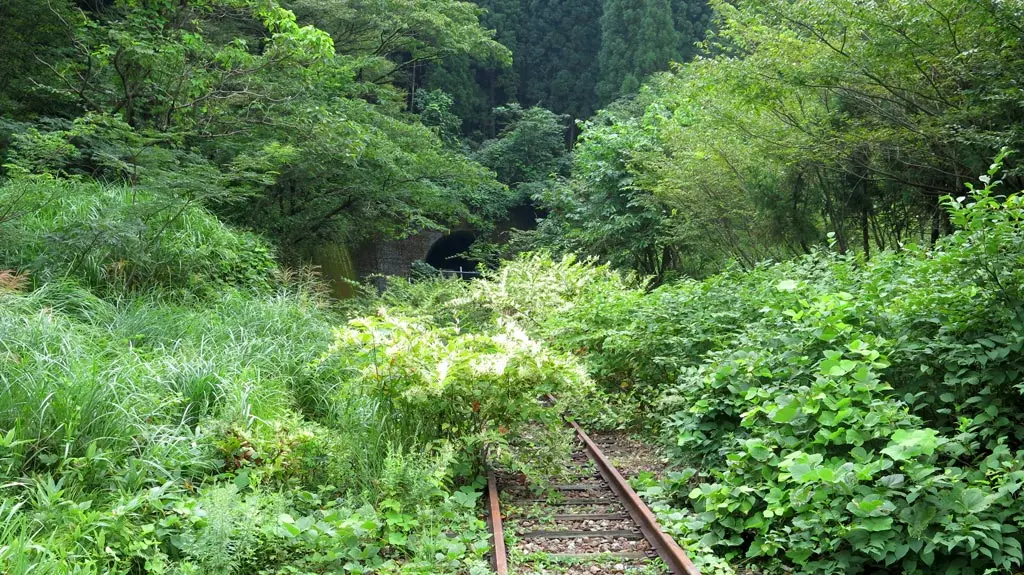
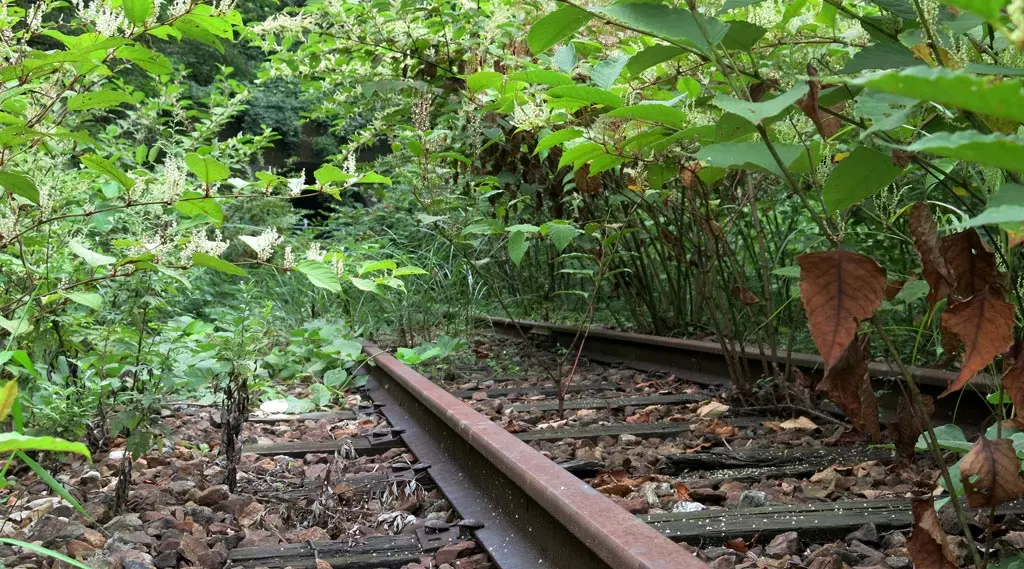
This is the other end of the Wariishi Tunnel at N36° 22' 32.98", E137° 16' 35.67". It is welded shut with wiring fencing preventing anyone, or any animal, from entering. The tracks are completely grown over from 7 years of neglect.
Completing the trip between tunnels, a series of 4 bridges were built, each named Kogen River Bridge 高原川橋. It's the second one I'm most interested in.
This beautiful faded red/orange and baby blue bridge is certainly one of the landmarks of the old the railway. This is at N36° 22' 56.8", E137° 16' 38.89".
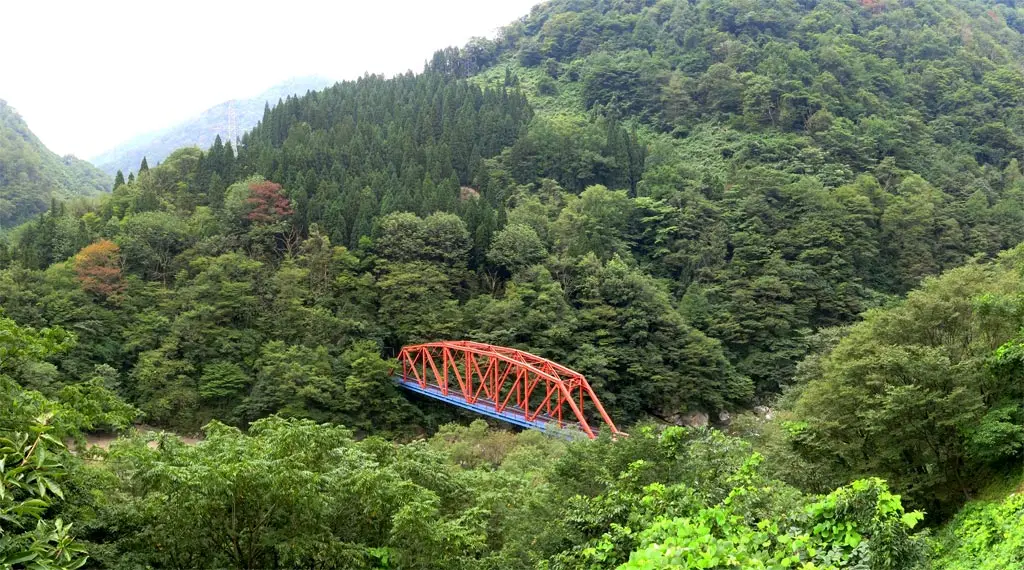
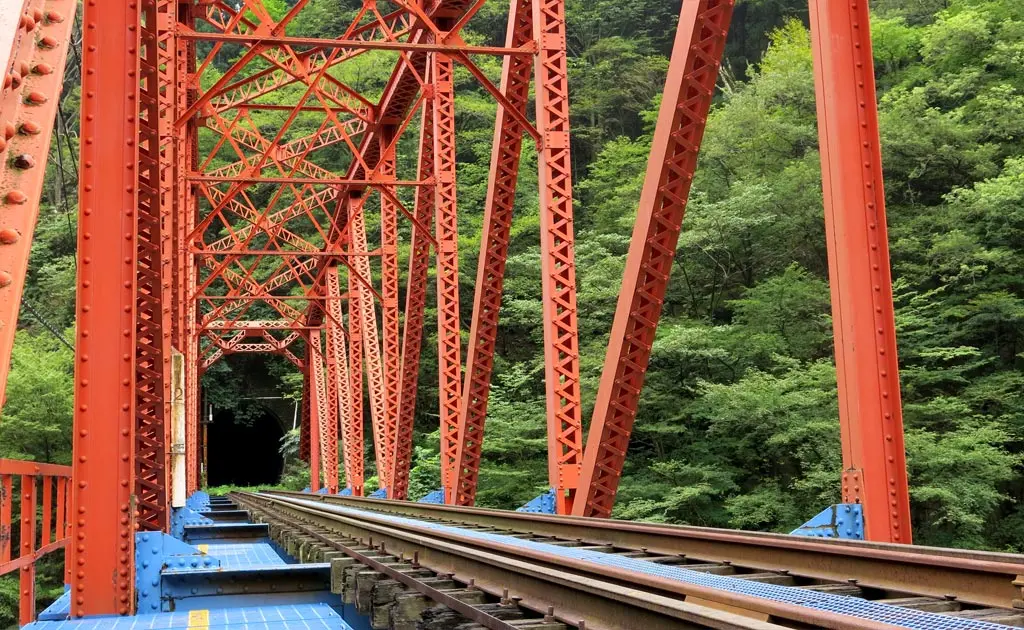
With the exception of Route 41, it stretches over a complete scene of nature. An aqua green Kogen River, white washed pink and light orange limestone, deep green pines, and light green fauna. And if it wasn't the rainy season, there'd be a bright deep blue sky, as well. The deep orange of the bridge makes it stick out, like man's accomplishment over nature.
This is the type of scene railway nerds dream of.
I met an elderly man also admiring the bridge, but he was more interested in looking for fish in the river. He picked up his stuff, and continued down the path to the river to start his day of fishing. Maybe I should have joined him for some more shots of the bridge, but I had much more to explore.
I continued following the length of the railway by driving on Route 41. The valley began to widen a little bit, the area flattened, and I arrived at my first destination past Kamioka proper, Uruishiyama Station, N36° 23' 58.83", E137° 17' 13.86". There are 9.4km remaining until Toyama.

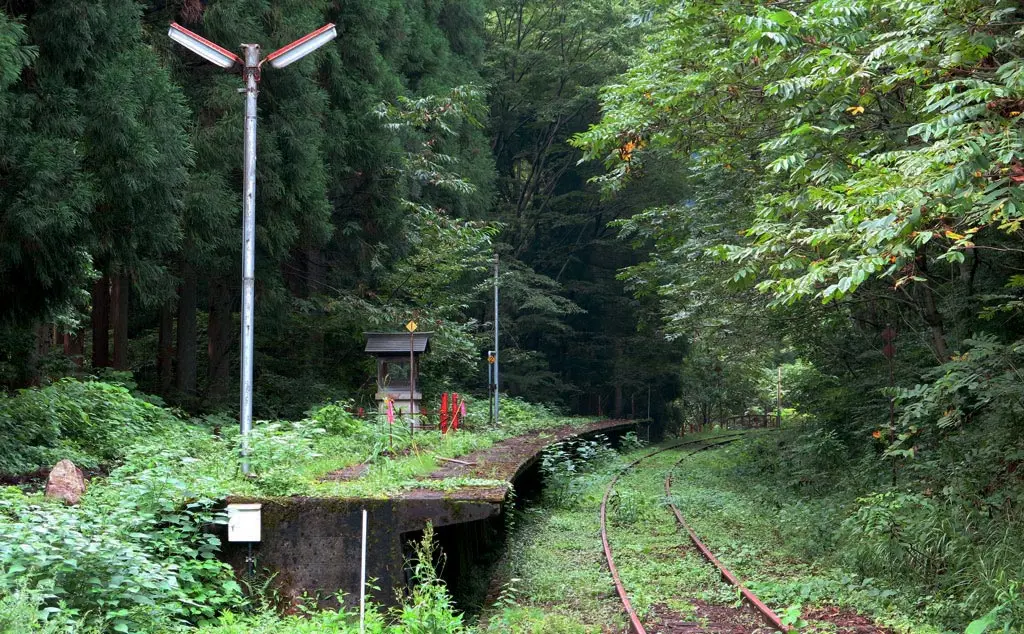
The only thing left of the Urushiyama Station is a concrete platform with nature beginning to takes its hold. The signs and other identifying objects have been removed. Stairs were still available to let you reach the platform, but no train will ever stop here again.
In front of the station was an old loader that was used for freight. The area surrounding the loader was completely paved, sealing the tracks, and preventing them from being used.
After the loader, the tracks continued around the corner into the green brush, and another tunnel.
After another stretch of distance, I found the Mozumi Station at 5.2km remaining 'til Toyama. This is at N36° 26' 4.81", E137° 16' 28.85". This station was much more built up than the previous one.
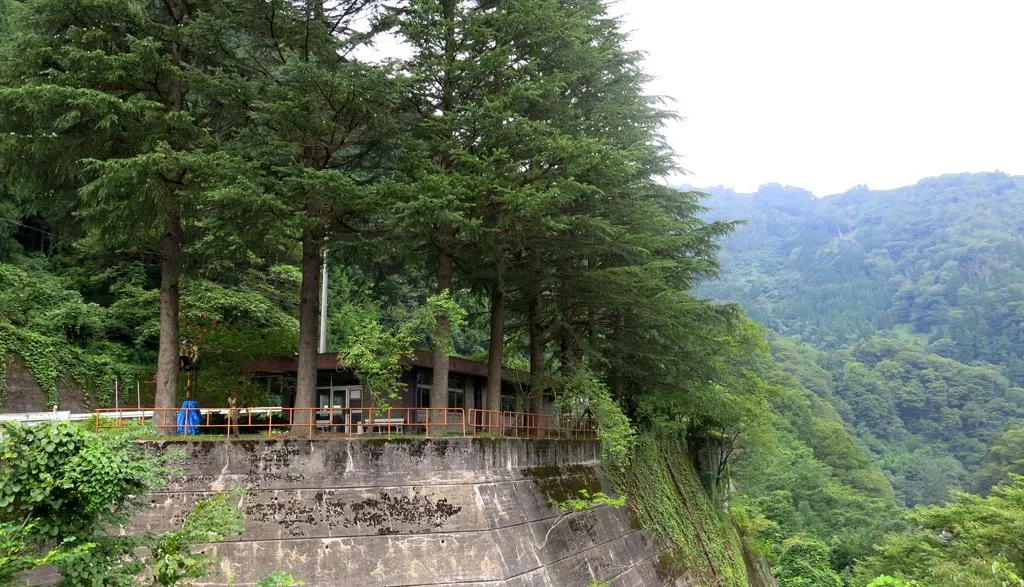
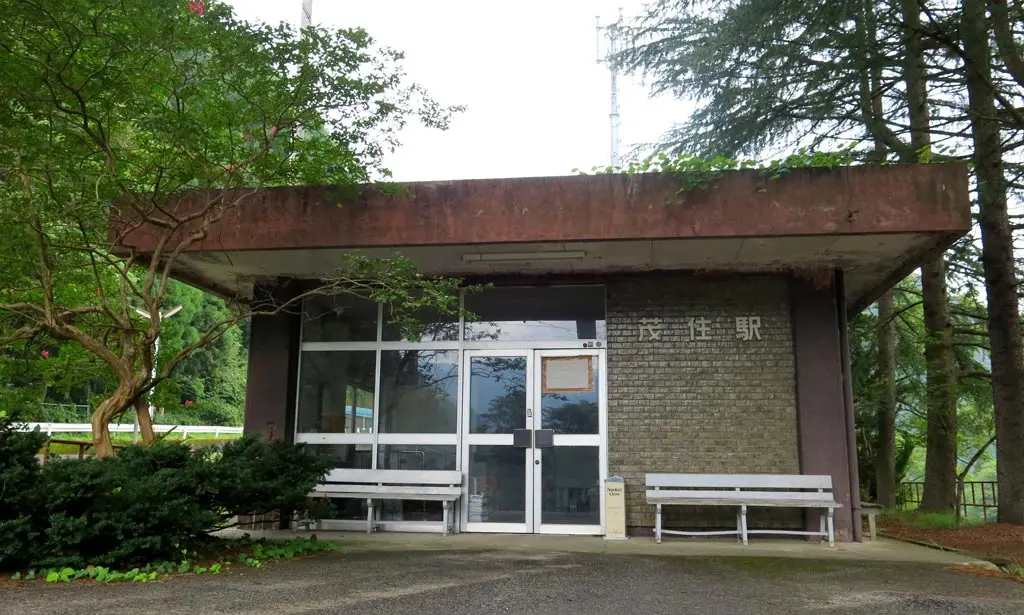
In the Mozumi area was another major zinc mine, and a hydroelectric plant. There were also several other old buildings that used to be restaurants, and other stores. So, the Mozumi Station must have had much more through traffic than the Urushiyama Station.
The building for the Mozumi Station was still standing and intact. The doors were shut, but unlocked, so I went inside. The inside of the building seemed pretty well kept. There were no smell, or anything. It looked like it might still be in some kind of use.
I went back outside, and looked around for the staff entrance. The main door was locked, but the sliding door was off its track and could be removed, so I went inside.
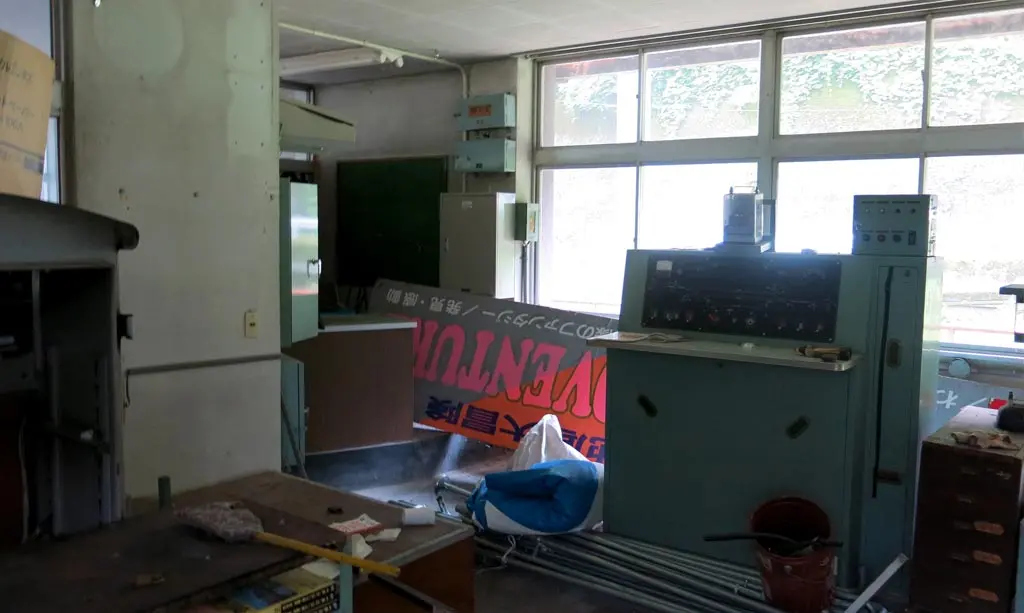
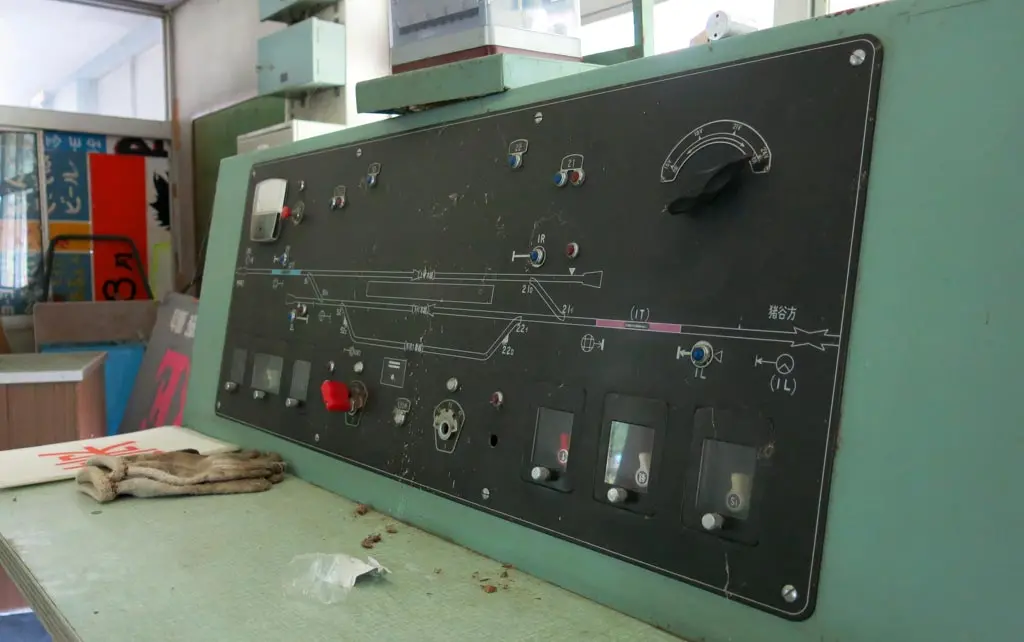
Inside was the control room for the station. There was the fuse box for the building, and a gutted ticket machine. There was also power box for the outside platform, and the control panel for the track switching. I think the designers took some clear lessons from the original Resident Evil games. Thank god I was visiting this place in the morning. I would be totally freaked out if this were dusk, or night.
In the back, there was a kitchen and sink, which did not look used in the last few years. The cabinets were completely covered in cobwebs, most of which had spiders attached. I would've ventured further inside had there not been so many spiders.
I started snooping around in some of the drawing near the control panel, and inside was a good-sized deep black SNAKE trying to sleep. I immediately jumped back and the thing started to make some kind of noise. It was probably saying, "Fuck man, leave me alone. Let me sleep." I slowly kicked the drawer shut with my foot. And then decided that was enough rummaging through drawers.
In fact, that's enough of this building. I'm going outside.
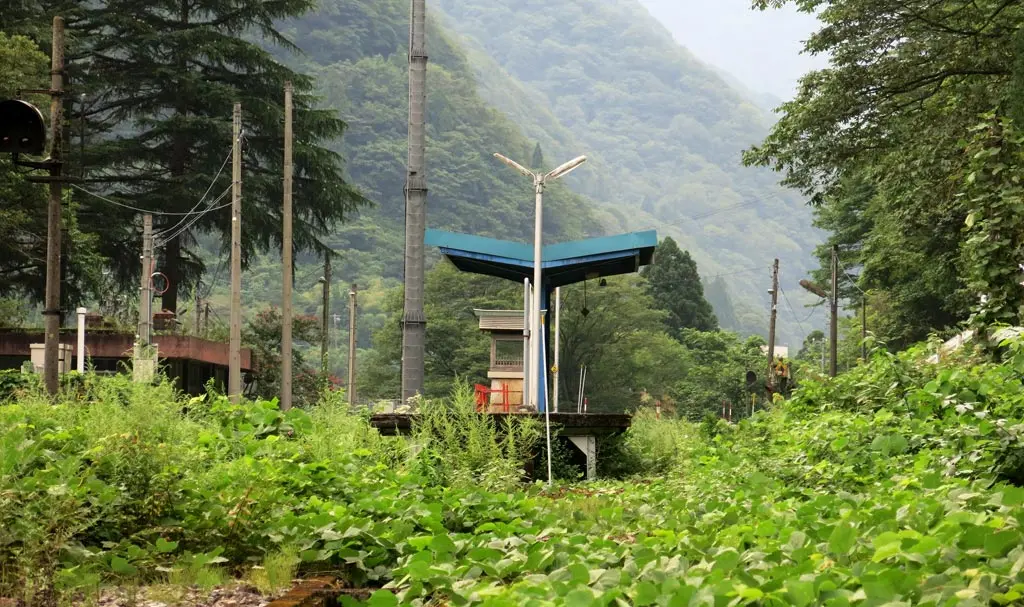
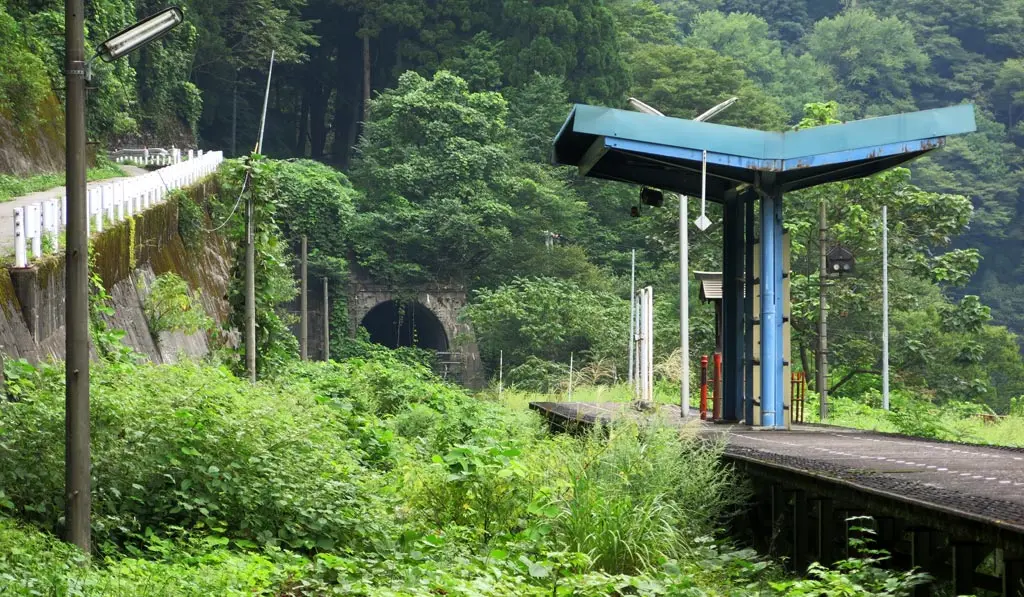
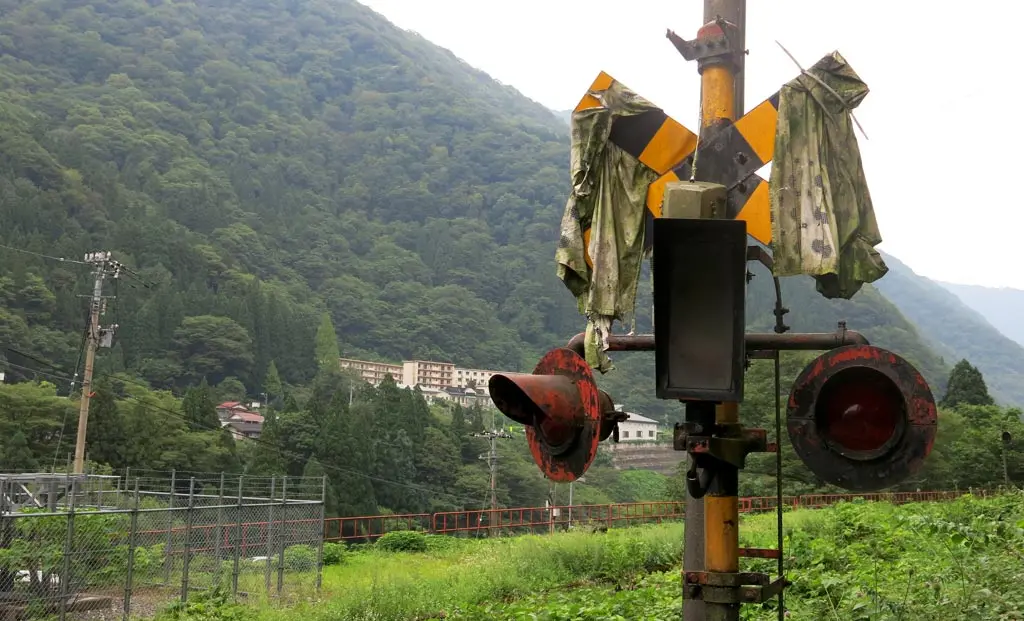
This platform was much more overgrown than Urushiyama. I actually had to use the train platform to get closer to the tunnel. I could not walk along the tracks due to all the overgrowth. Again, on the platform, the signs and other identifying things had been removed.
Man.. Side Note: I really should have looked through the station a little more to try and find a schedule for the Kamioka line. I found those old phone books, but I really wanted to know what the daily life of this line was like. I want to know how often it ran, and at what times. The Wikipedia article gives some hints, but it's not enough.
Also, I'm really curious on how much it cost to actually ride the Kamioka railway between all these stations. I really should have looked at that ticket machine closer.
Anyway, there were plenty of spiders outside, too.
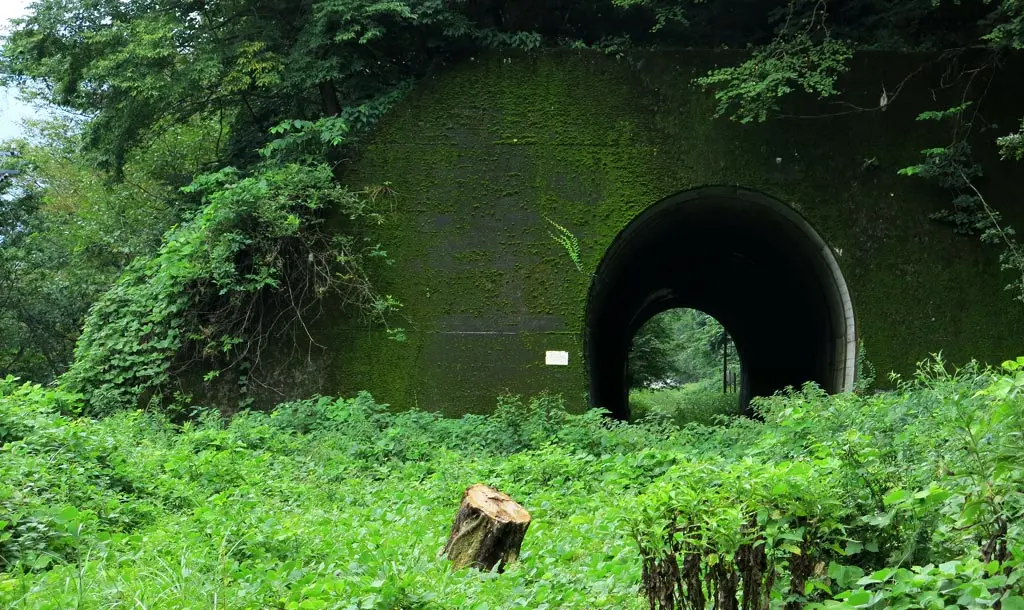
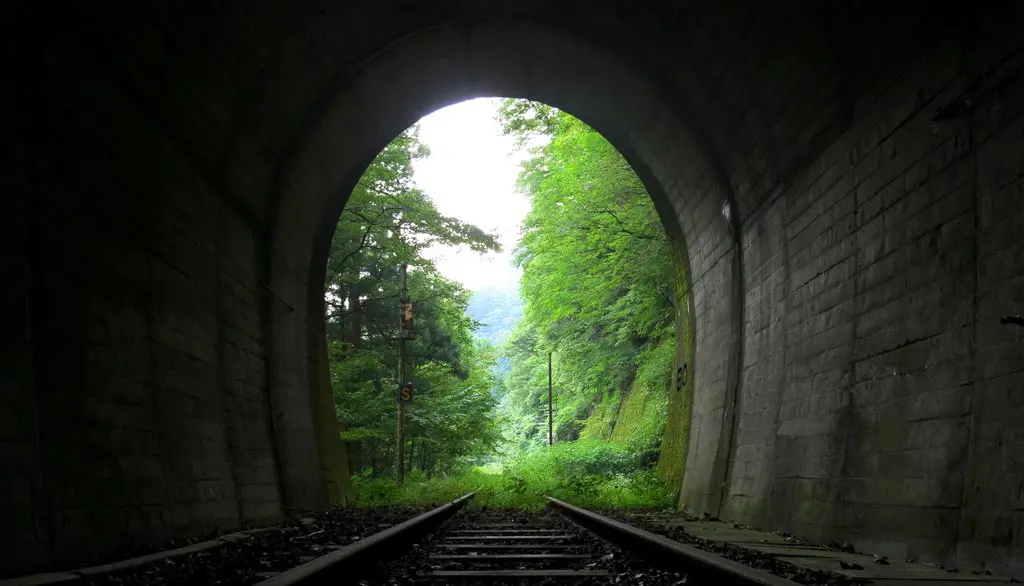
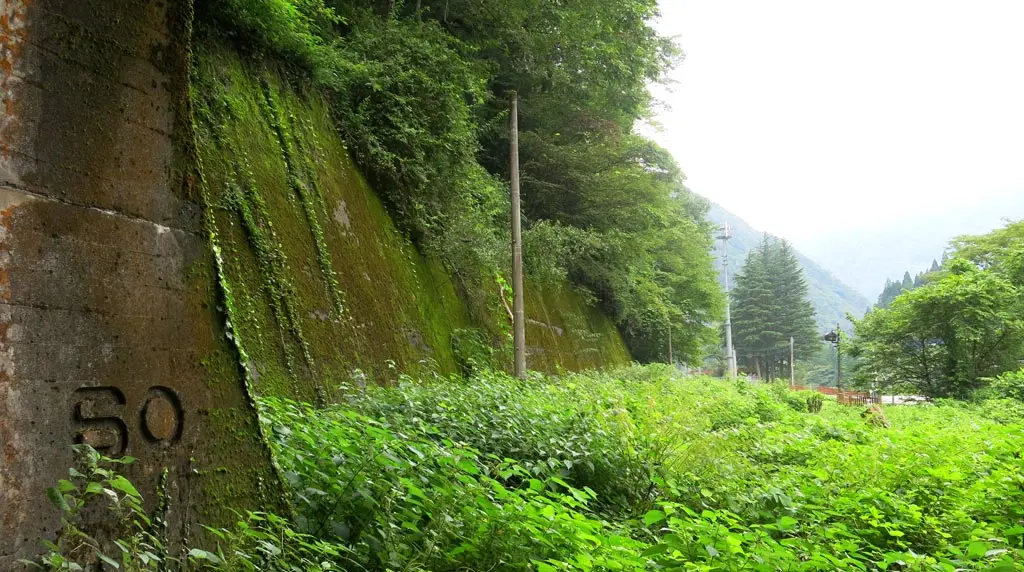
Down the line a few hundred meters was an open tunnel. Maybe because it was so short they decided to leave it open rather than seal it up. Also nearby was a house or a temple or something, so maybe they wanted to keep it clear because it looked better.
The last decommissioned station on the line was Hida Nakayama Station, with only 2.3km remaining to the end. It was a little difficult to find if you don't know where it is. Here are the coordinates: N36° 27' 14.91", E137° 15' 11.67".
It sits above Route 41, and it's facing side is almost completely grown over, and blends into the mountain really well. There's nothing around there either. No houses, or buildings of any kind. It seems really out of the way for anyone to actually use. I'm not sure why they didn't choose a more central location.
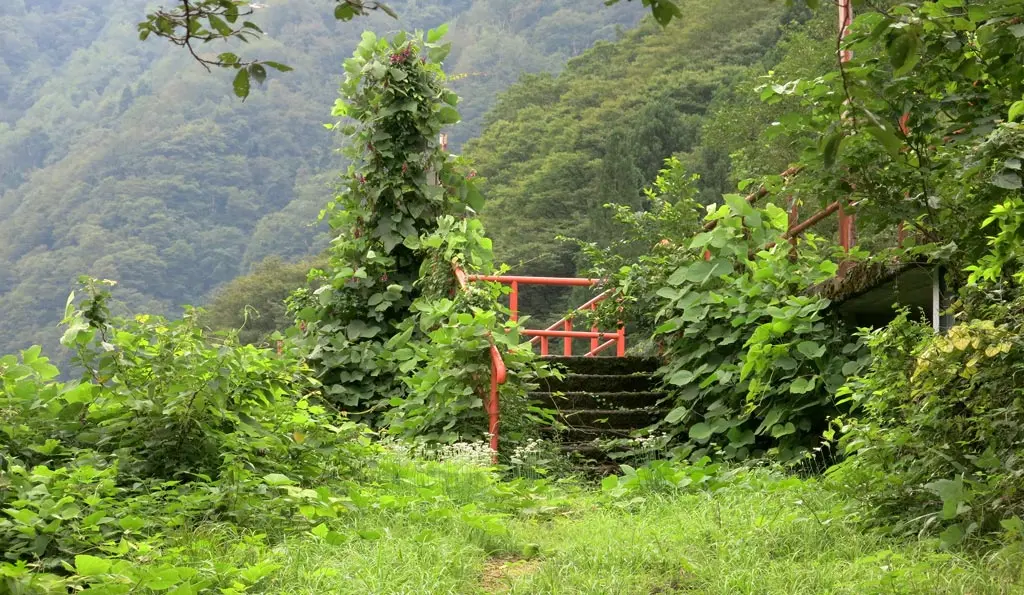
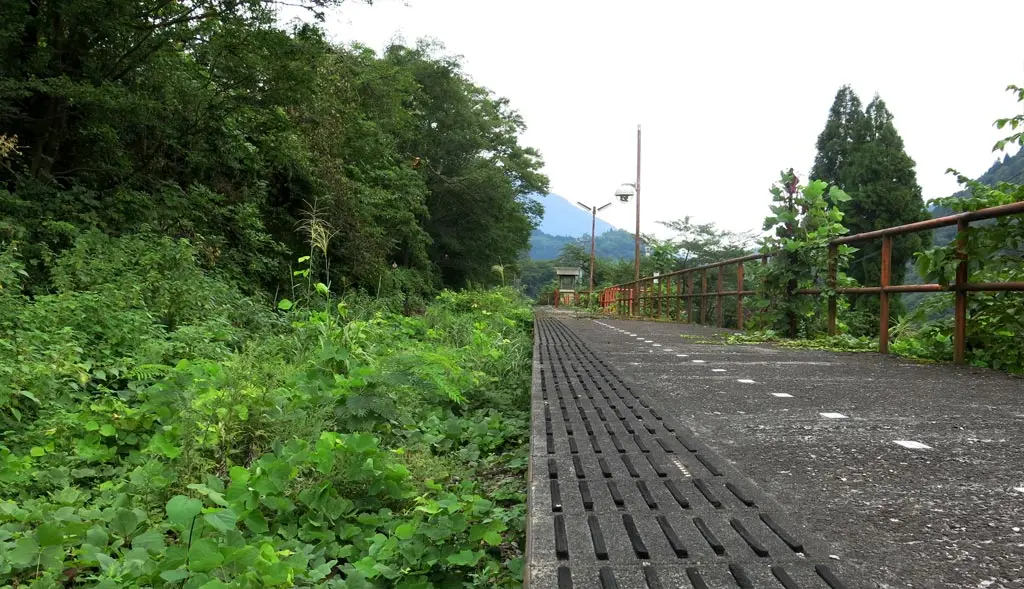
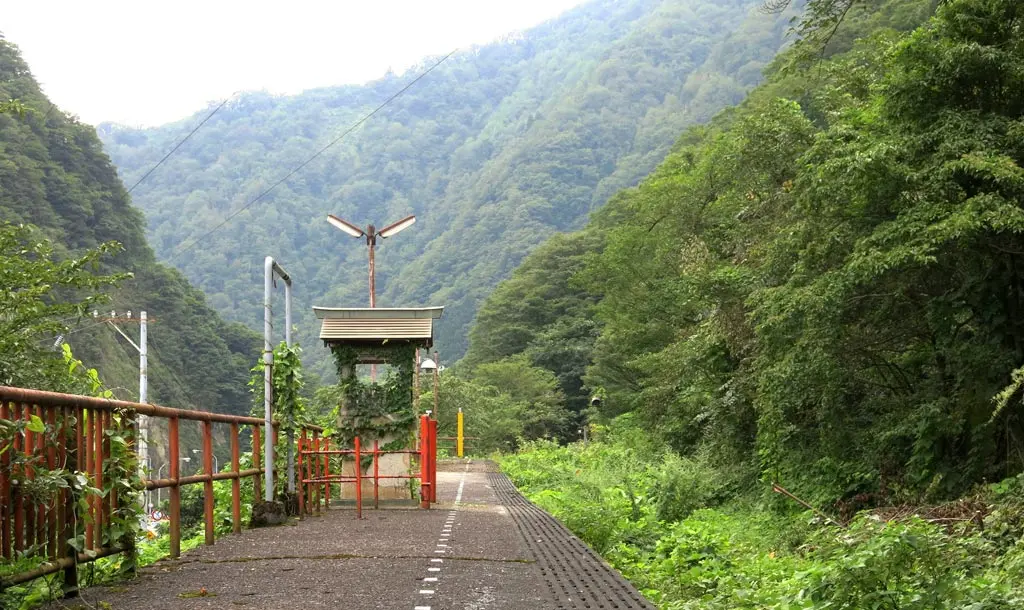
The station sat on the side of the mountain, the surrounding plants made it their home. It might be the most overgrown of the 3 stations. With each station, I am getting closer to Toyama, and closer to the Sea of Japan. I've only traveled 15km, but maybe that's enough to spur such growth in the plant life.
Nakayama was the first area I had been to that had quite a few modern looking, well-kept houses, and actually felt like a neighborhood. Though, while the residents looked like they were living perfectly fine, any building that represented a business had clearly been closed for many years.
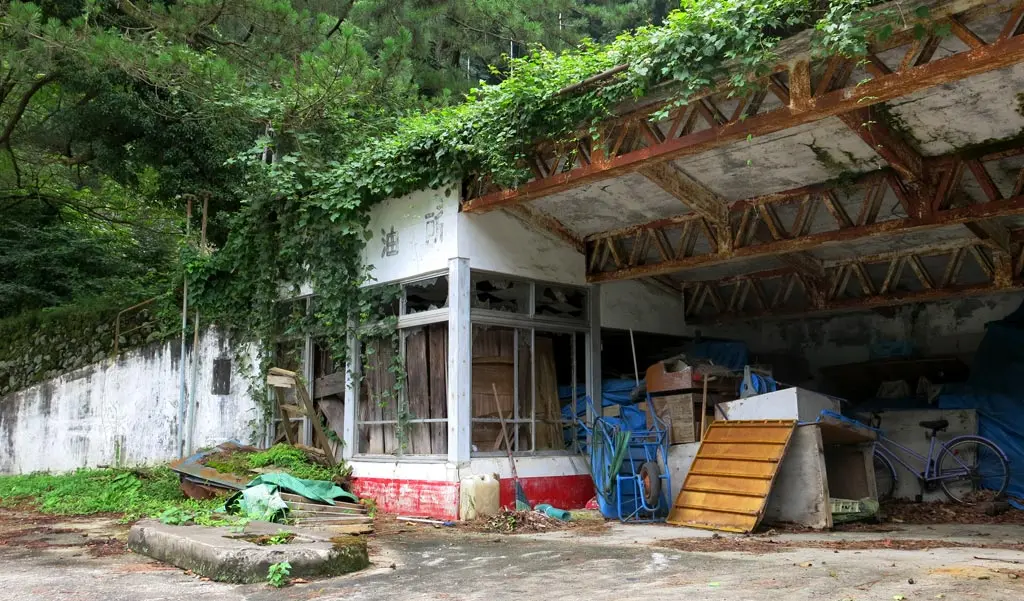
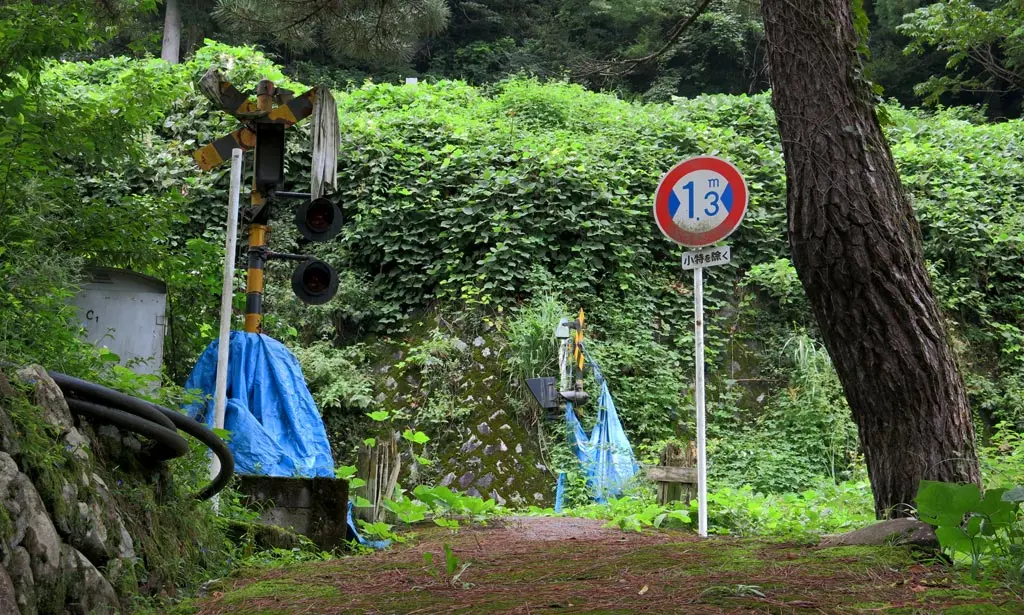
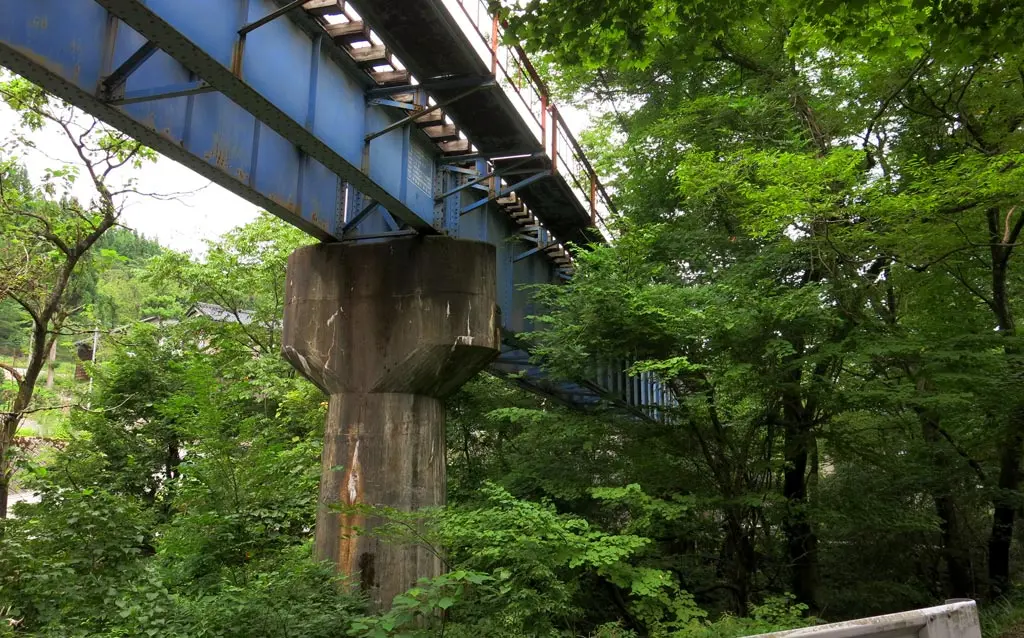
With the exception of the businesses, the area seemed pretty lively. Elderly folks were out on their daily walks. Several cars were actually driving in the neighborhoods, rather than simply passing by. For the first time, I came across some actually working vending machines.
The very last image of the Kamioka Railway, before it plunges into its final tunnel directly on the prefecture line between Gifu and Toyama, was another beautiful red/orange bridge, the Miya River Bridge 宮川橋.
Unlike the 2nd Kogen River Bridge, this was near a dam, and a few other manmade structures. We were no longer in the remote serene wilderness. We were on the cusp of civilization.
On the other side of the tunnel, in Toyama prefecture, was the final stop of the Kamioka Railway..
The Inotani Station was were the Kamioka Line branched from the Takayama Line, but all that ended. Weirdly enough, the original signs for Hida Nakayama were still placed on the platforms. This is an unmanned station, so you don't need a ticket to walk around on the platforms. There aren't any fences or barriers to keep you from walking around, anyway.
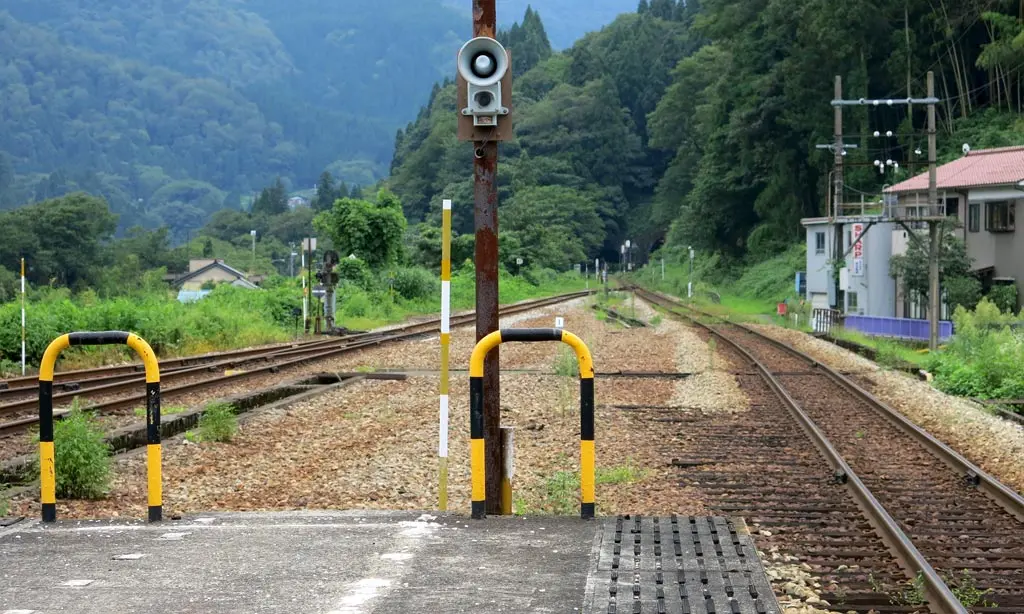

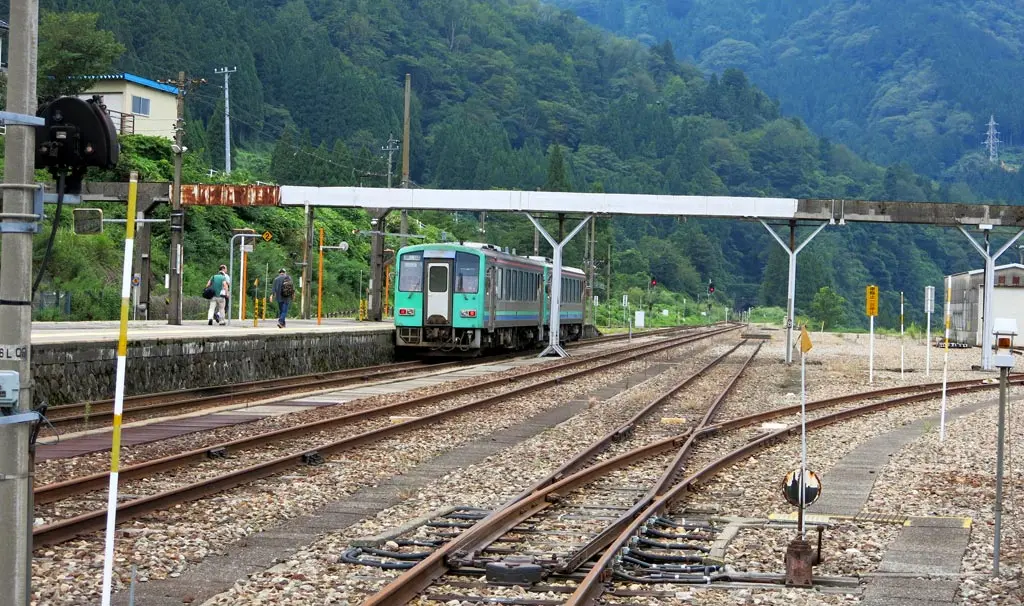
Inotani Station is a checkpoint between the Central Japan Railway Service (JR東海), and the Western Japan Railway Service (JR西日本), which are separate companies. Local trains usually stop here, and exchange passengers, and personnel. Express trains bound from Toyama to Nagoya usually blow through.
But, despite being a checkpoint station, the place is pretty small. Trains don't run through here very often either. The timetable listed less than 10 trains stop here each day. When I was walking around, there was a train waiting at one of the platforms, but it wasn't scheduled to leave for another 50 minutes. I met some local workers on their way to that train who must've only been working for half a day.
Across the street from the station was a very small omiyage shop. It just looked like a corner store. The old woman who ran the shop was by the station chatting with a taxi driver who looked equally bored.
Technically, this is the beginning of the Kamioka Railway, but it's the end of my journey. The Railway had interested me in quite a while, so it was great to finally see the 19.9km stretch of rail from beginning to end. There's still some more research I could do, but I think Japanese Wikipedia has much of it covered. I'm still curious on how frequent the trains ran, the price of the fare.
Wikipedia mentioned that the Kamioka Railway may have only run 8 times a day. Which is interesting, because the Takayama Line out of Inotani Station seemed to run just as frequent. I wonder how much longer the Takayama Line will be cost effective, or if it even is cost effective at the moment. The bus system covers much more ground at a cheaper price. And the northern central shinkansen line just completed construction all the way to Kanazawa. When that line goes all the way to Kyoto and Shin-Osaka, the Takayama line will become even less traveled.
I always considered Japan a marvel at public transportation, but with the areas in the mountains so wide and remote, it's just not feasible. If you live out here, you basically need a car.
Anywyay, urban decay, yeah!

